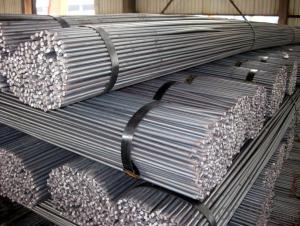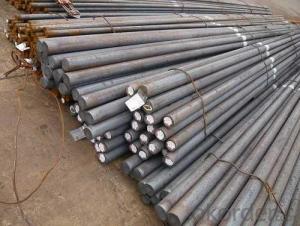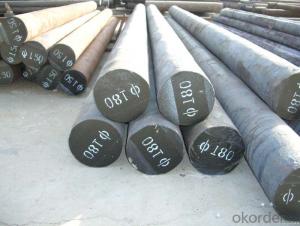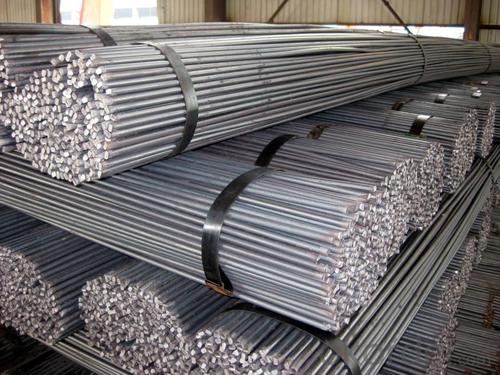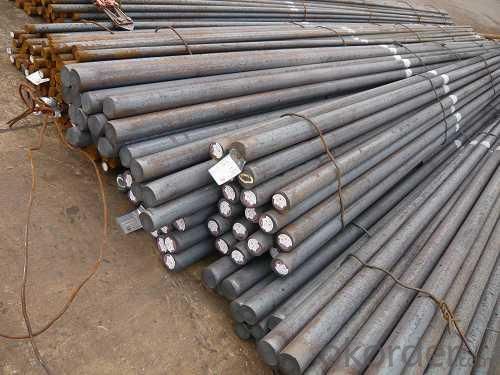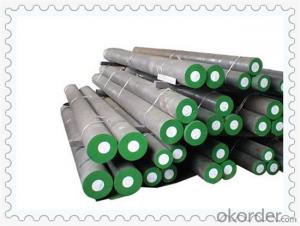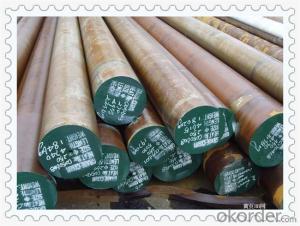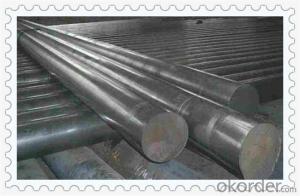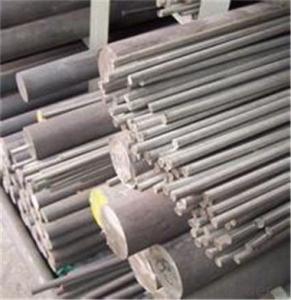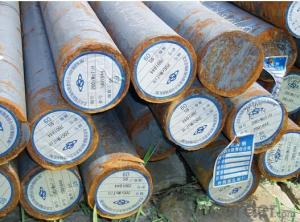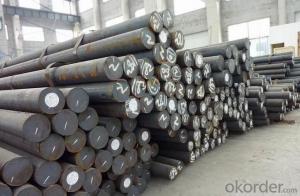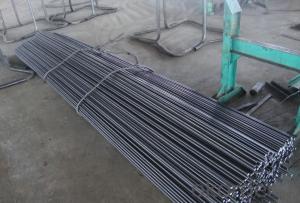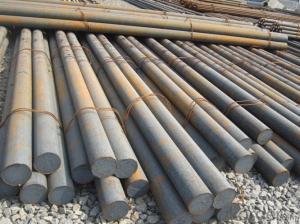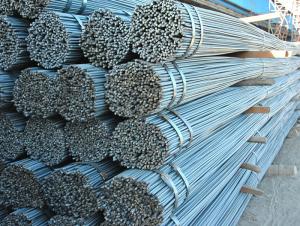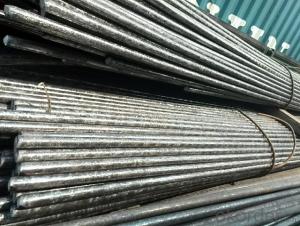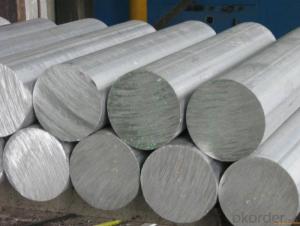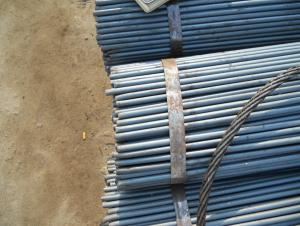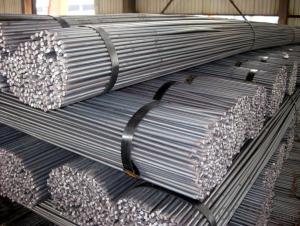Steel Round Bar 12L14 Cold Drawn Steel Bar /Free Cutting
- Loading Port:
- Tianjin
- Payment Terms:
- TT OR LC
- Min Order Qty:
- 25 m.t.
- Supply Capability:
- 40000 m.t./month
OKorder Service Pledge
OKorder Financial Service
You Might Also Like
Packaging & Delivery
| Packaging Detail: | Exporting packing or according to your special requirments. |
| Delivery Detail: | 30 days after comfirming or according to your quantity. |
Specifications
1. Grade:12L14, 1215
2. Size: Dia 0.2mm-16mm
3. Technique: Cold drawn
Next we introduce the products (12L14 Steel Bar)as follows
1. Steel grade: 12L14; SUM24L.
2. Diameter: 0.2mm-16mm.
3. Application: machinery, mechanical parts, instruments, auto parts and so on.
Other information of 12L14 Steel bar:
MOQ | 5MTS |
Payment Term | 30% TT prepayment, 70% against copy of B/L. Or L/C at sight
|
Delivery Time:
| 40 days after getting deposit.
|
Packing: | Exporting package or as customer’s requirement. |
Our website: | www.hengsteel.com
|
Chemical composition& Tolerance:
| Grade | |||||||
| AISI | JIS | C | Si | Mn | P | S | Pb |
| 12L14 | SUM24L | 0.15max | 0.15-0.35 | 0.85-1.15 | 0.04-0.09 | 0.26-0.35 | 0.10-0.35 |
| S25CL | 0.22-0.28 | 0.15-0.35 | 0.30-0.6 | 0.03max | 0.035max | 0.10-0.35 | |
| S45CL | 0.42-0.48 | 0.15-0.35 | 0.60-0.9 | 0.03max | 0.035max | 0.10-0.35 | |
| 1215 | SUM23 | 0.09max | 0.75-1.05 | 0.04-0.09 | 0.26-0.35 | ||
| SUN25 | 0.15max | 0.90-1.40 | 0.07-0.12 | 0.30-0.40 | |||
| Tolerance grade: | |||||||
| h8 | h9(Round bar) | h10(Hexagonal bar) | h11 | h12 | |||
| <3mm | 0-0.014 | 0-0.025 | 0-0.040 | 0-0.060 | 0-0.10 | ||
| 3-6mm | 0-0.018 | 0-0.030 | 0-0.048 | 0-0.075 | 0-0.12 | ||
| 6-10mm | 0-0.022 | 0-0.036 | 0-0.058 | 0-0.090 | 0-0.15 | ||
| 10-18mm | 0-0.022 | 0-0.043 | 0-0.070 | 0-0.11 | 0-0.18 | ||
| 18-30mm | 0-0.033 | 0-0.052 | 0-0.084 | 0-0.13 | 0-0.21 | ||
If you have any demands abou steel products, pls don't hesitate to contact us.We look forward to built business relationship with you.
Product Picture:
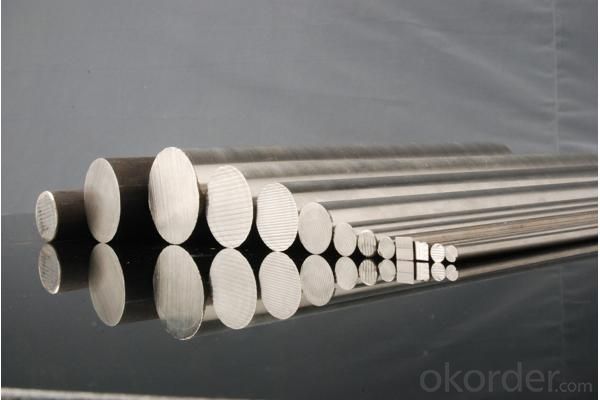
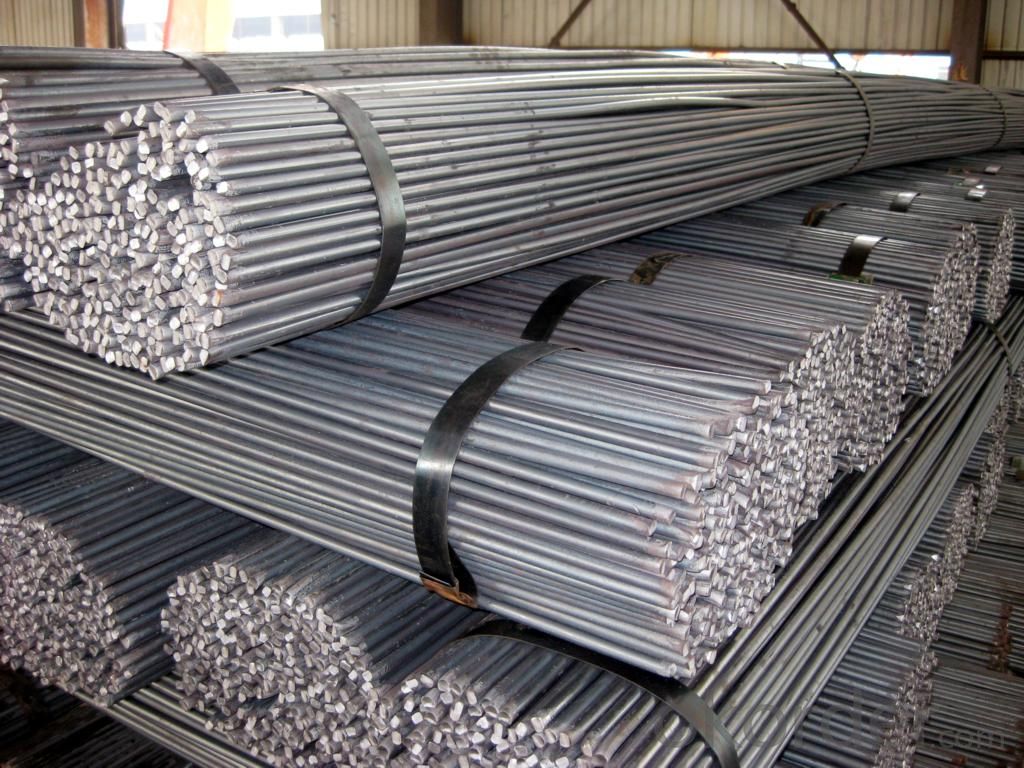
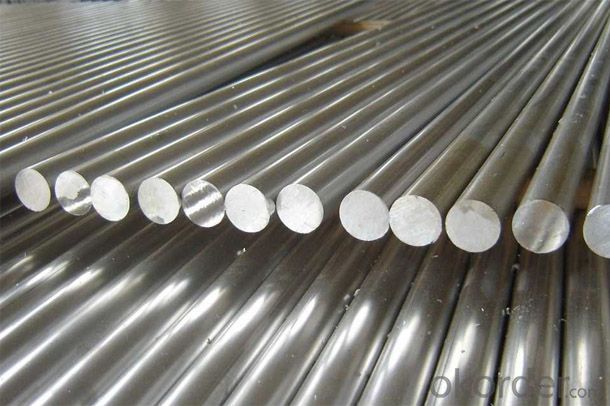
- Q: What are the different types of steel round bars used in the manufacturing of valves and fittings?
- Valves and fittings in manufacturing commonly utilize various types of steel round bars. These options include: 1. Carbon Steel Round Bars: Frequently employed in valve and fitting manufacturing, carbon steel round bars possess notable attributes such as strength, durability, and the ability to withstand high temperatures and pressures. 2. Stainless Steel Round Bars: Ideal for valves and fittings that come into contact with liquids or gases, stainless steel round bars exhibit high resistance to corrosion. They are also known for their exceptional strength and mechanical properties. 3. Alloy Steel Round Bars: Alloy steel round bars are created by incorporating alloying elements like chromium, manganese, and nickel into carbon steel. This enhances their strength, hardness, and resistance to wear and tear, making them suitable for demanding valve and fitting applications. 4. Duplex Steel Round Bars: Combining ferrite and austenite phases, duplex steel round bars are a specific type of stainless steel. This unique blend grants them excellent strength, corrosion resistance, and resistance to stress corrosion cracking, making them well-suited for valves and fittings in harsh environments. 5. Nickel Alloy Round Bars: Known for their outstanding resistance to corrosion and high-temperature applications, nickel alloy round bars possess excellent mechanical properties. They are commonly utilized in valves and fittings that handle corrosive fluids or operate in extreme temperatures. When manufacturing valves and fittings, it is crucial to select the appropriate steel round bar based on the specific requirements of the application. Factors to consider include pressure, temperature, fluid compatibility, and environmental conditions.
- Q: Can steel round bars be coated or plated?
- Steel round bars can indeed be coated or plated, which is a prevalent method employed to augment the functionality and visual appeal of steel products. Numerous choices exist for coating and plating, including zinc plating, chrome plating, nickel plating, and powder coating. These procedures offer added defense against corrosion, enhance durability, and create the desired aesthetics for the steel. The selection of the appropriate coating or plating technique hinges upon the particular application and specifications of the steel round bars.
- Q: How are steel round bars used in the manufacturing of valves and fittings?
- Steel round bars are commonly used in the manufacturing of valves and fittings due to their strength, durability, and versatility. These round bars serve as the primary raw material for various components of valves and fittings. One crucial application of steel round bars in valve manufacturing is the production of valve stems. Valve stems are responsible for controlling the flow of fluids or gases through the valve. The round bars are machined and threaded to create the stem, which connects to the valve disc or plug. Steel round bars are chosen for this purpose because of their high tensile strength, which ensures the stem can withstand the pressure and torque required to operate the valve. In fittings manufacturing, steel round bars are commonly used to produce threaded connectors, nipples, and couplings. These components are essential for joining pipes or tubes together, allowing for fluid or gas transfer in various systems. Steel round bars are easily machinable, enabling manufacturers to create precise threads and shapes required for these fittings. Furthermore, steel round bars are also used to fabricate the body or housing of valves and fittings. The bars can be cut, forged, or machined into the desired shape, providing a sturdy and reliable structure for the valve or fitting. The use of steel in the body ensures the component's ability to withstand high pressures, temperature variations, and corrosive environments. Overall, steel round bars play a vital role in the manufacturing of valves and fittings. Their strength, durability, and machinability make them an excellent choice for creating critical components such as valve stems, threaded connectors, and the bodies of valves and fittings.
- Q: The two project is to use rebar or rebar?
- It is recommended to use thread steel as far as possible, because the bonding force and holding force of the thread steel is better than that of the round steel, and it is generally known that the tensile pulling force of the round steel is relatively poor.
- Q: What is the elasticity of a steel round bar?
- The ability of a steel round bar to return to its original form and size after external forces or deformations is referred to as its elasticity. Steel is renowned for its high elastic modulus, indicating its resistance to deformation and ability to withstand significant stress before permanently bending or breaking. The composition of a steel round bar, specifically its carbon content and the inclusion of other alloying elements, determines its elasticity. Generally, steel with higher carbon content possesses greater elasticity and can be more easily manipulated without enduring permanent deformation. Nonetheless, it is noteworthy that factors like temperature, strain rate, and any defects or imperfections in the material can also influence the elasticity of a steel round bar.
- Q: The difference between round steel and screw steel
- Round bar is divided into three parts: hot rolling, forging and cold drawing. Standard Specification for hot rolled round steel is 5.5-250 mm. Of which: 5.5-25 mm small round bars are mostly supplied by straight strips. They are used as reinforcing bars, bolts and various mechanical parts, and more than 25 millimeters of round steel. They are mainly used in the manufacture of mechanical parts or seamless steel tube billets
- Q: How are steel round bars used in the manufacturing of machinery and equipment?
- Steel round bars are widely used in the manufacturing of machinery and equipment due to their inherent strength, durability, and versatility. These bars are typically made from carbon steel or alloy steel and come in various diameters and lengths. One common application of steel round bars is in the fabrication of shafts and axles. These components are crucial for transmitting rotational motion and torque in machinery. Steel round bars provide the necessary strength and stiffness to withstand the forces and stresses experienced during operation. They are often machined to precise tolerances and then heat-treated to enhance their mechanical properties, such as hardness and toughness. Another important use of steel round bars is in the production of gears and sprockets. These components are essential for transmitting power and motion between different parts of a machine. Steel round bars are machined to form teeth or cogs that mesh together, ensuring smooth and efficient operation. The high strength and wear resistance of steel enable gears and sprockets to withstand heavy loads and repetitive motion without deformation or failure. Steel round bars are also utilized in the manufacturing of various machine components such as bearings, couplings, and fasteners. Bearings, for example, rely on the strength and hardness of steel to support rotating or sliding shafts while minimizing friction and wear. Couplings, on the other hand, utilize steel round bars to connect different machine parts, transmitting power and motion efficiently. Steel round bars are also used as fasteners, providing a secure and reliable connection between different machine elements. In addition to these applications, steel round bars are often employed in the construction of machine frames and structures. Their high strength-to-weight ratio makes them ideal for providing structural support and stability. By using steel round bars, manufacturers can build robust and reliable machinery and equipment that can withstand heavy loads, vibrations, and other challenging operating conditions. Overall, steel round bars play a vital role in the manufacturing of machinery and equipment. Their exceptional strength, durability, and versatility make them a preferred choice for a wide range of applications. Whether it is for shafts, gears, bearings, or machine frames, steel round bars provide the necessary mechanical properties to ensure the reliable and efficient operation of machinery and equipment.
- Q: What's the difference between bearing steel and round steel?
- Bearing steel refers to the steel used to make bearings. Round steel is generally referred to as round bar steel. One refers to the material, and the other refers to the profiles. Such as bearings, needle roller raw material is round steel, but also bearing steel.
- Q: Are steel round bars suitable for marine environments?
- Yes, steel round bars can be suitable for marine environments, but it depends on the specific type of steel used and the conditions of the marine environment. Stainless steel is often the preferred choice for marine applications due to its excellent corrosion resistance properties. Stainless steel contains chromium, which forms a protective layer on the surface of the steel, preventing corrosion and rusting. However, not all steel round bars are suitable for marine environments. Carbon steel, for example, is more susceptible to corrosion in marine environments, especially in the presence of saltwater. Carbon steel should be carefully protected with coatings or treatments to prevent corrosion. Additionally, the conditions of the marine environment also play a significant role in determining the suitability of steel round bars. Factors such as the salinity of the water, exposure to chemicals, temperature variations, and physical stress can affect the corrosion resistance of steel. In highly corrosive marine environments, it is advisable to use specialized marine-grade stainless steel or other corrosion-resistant alloys. Ultimately, it is crucial to select the appropriate grade of steel and consider additional protective measures, such as coatings or galvanization, to enhance the durability and longevity of steel round bars in marine environments.
- Q: What are the different types of steel round bar surface finishes for improved lubricity?
- Some common types of steel round bar surface finishes for improved lubricity include chrome-plating, nickel-plating, and black oxide coating. These finishes help to reduce friction and enhance the performance of the steel round bar in various applications.
Send your message to us
Steel Round Bar 12L14 Cold Drawn Steel Bar /Free Cutting
- Loading Port:
- Tianjin
- Payment Terms:
- TT OR LC
- Min Order Qty:
- 25 m.t.
- Supply Capability:
- 40000 m.t./month
OKorder Service Pledge
OKorder Financial Service
Similar products
Hot products
Hot Searches
Related keywords
